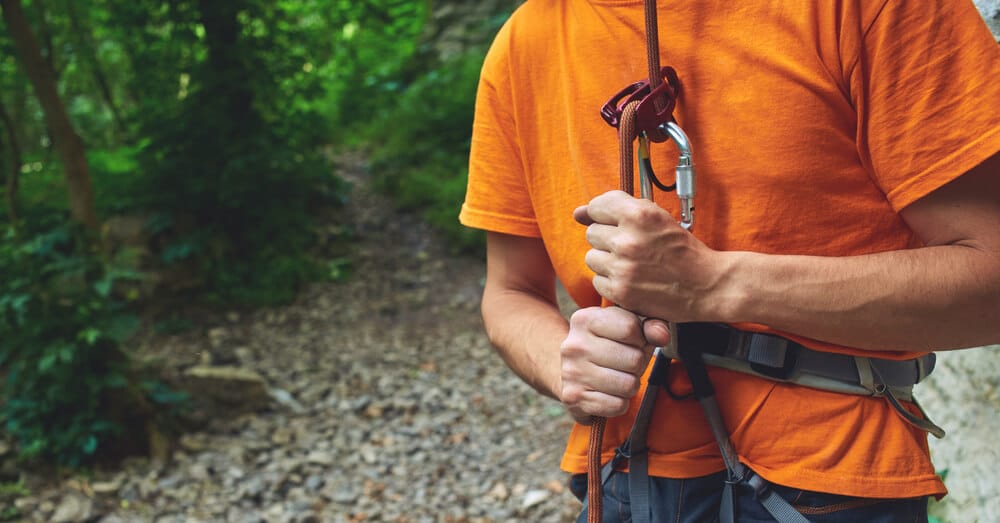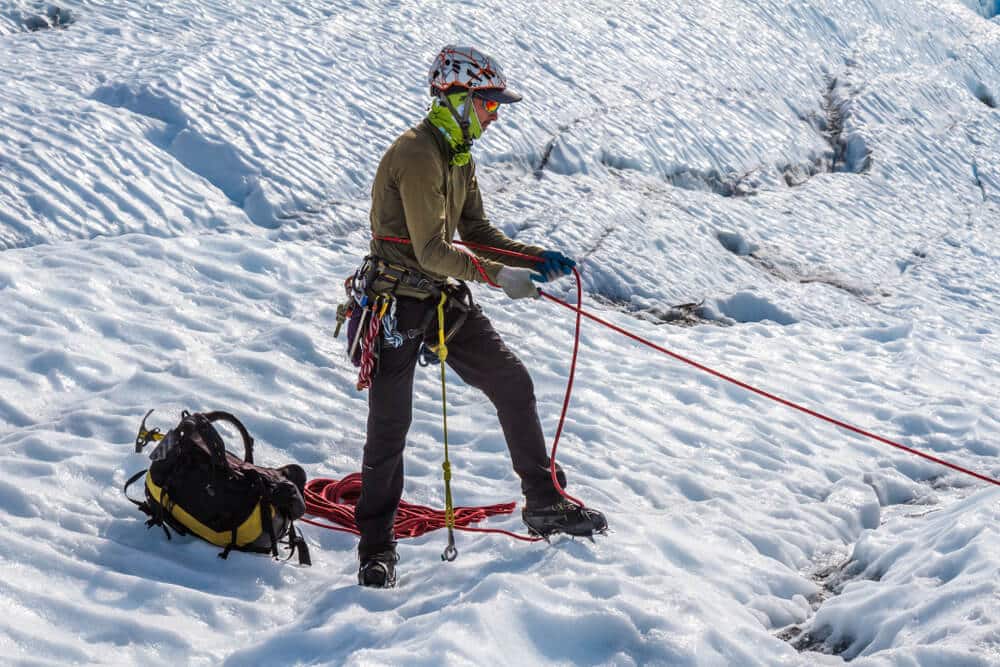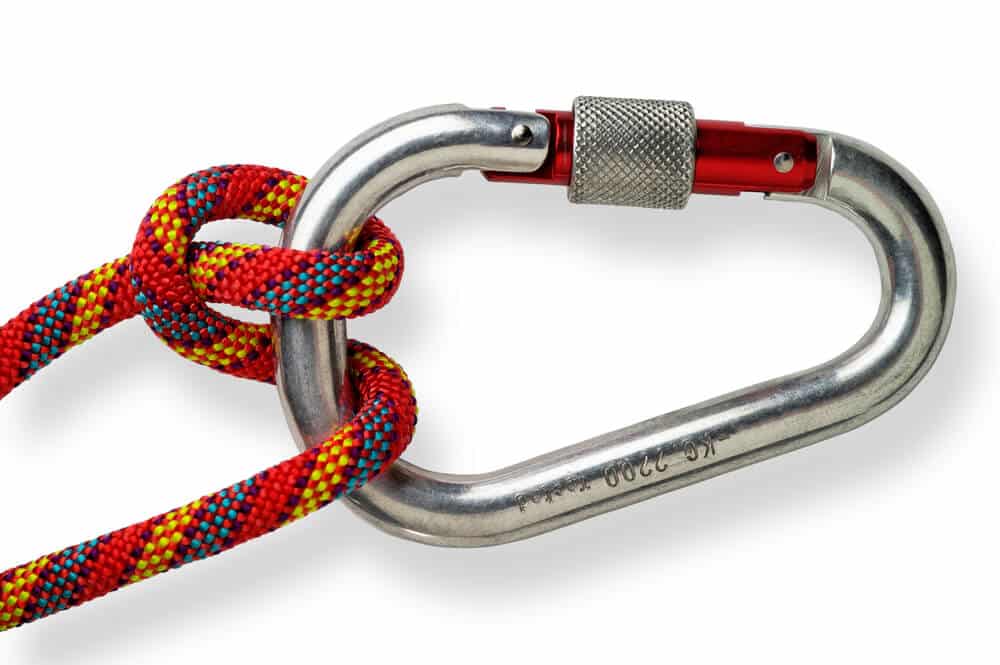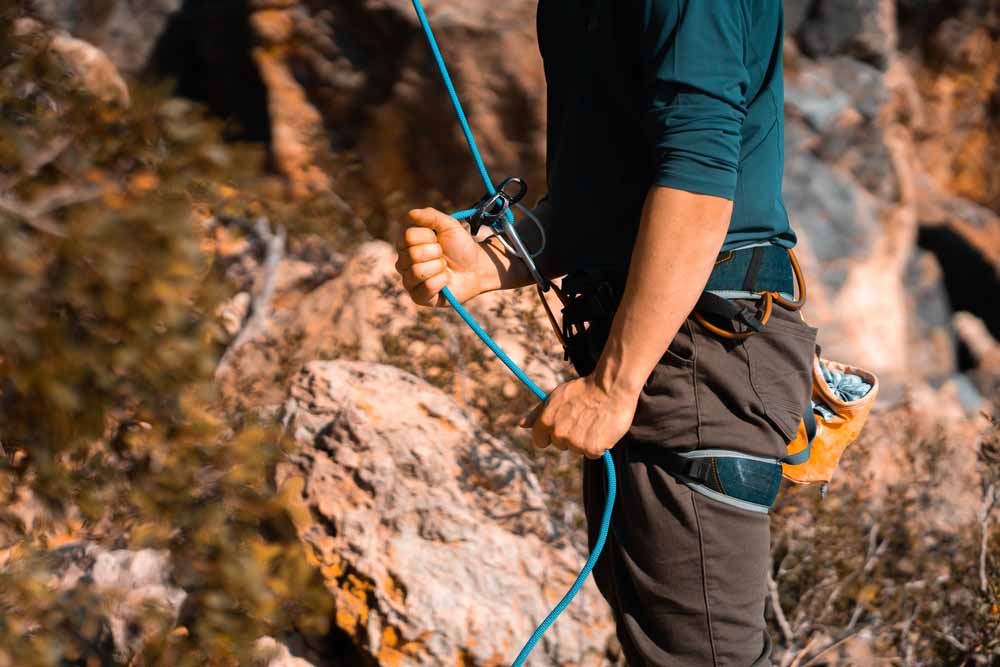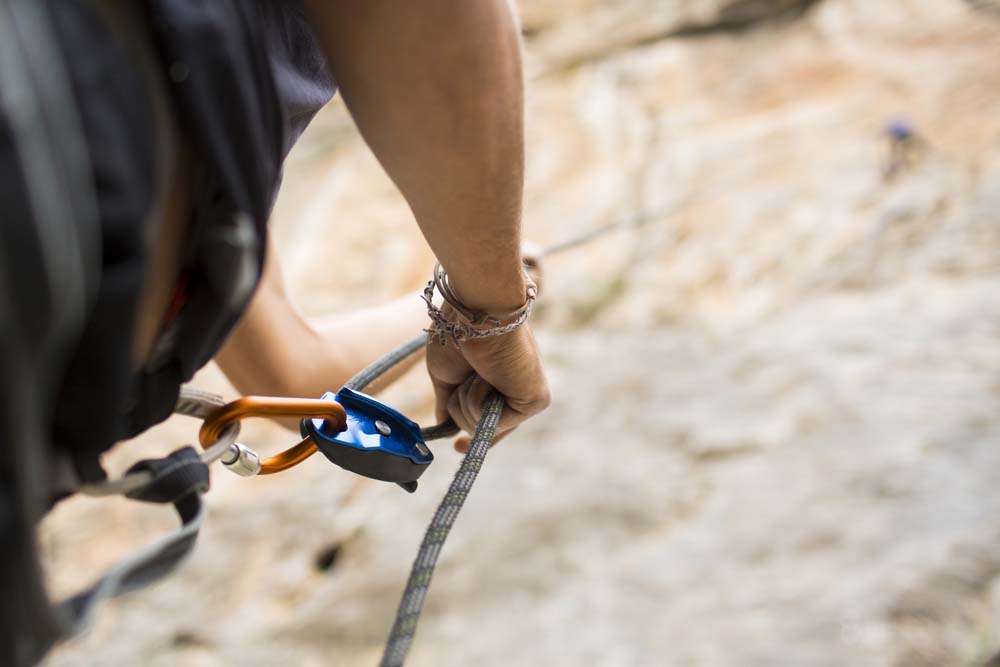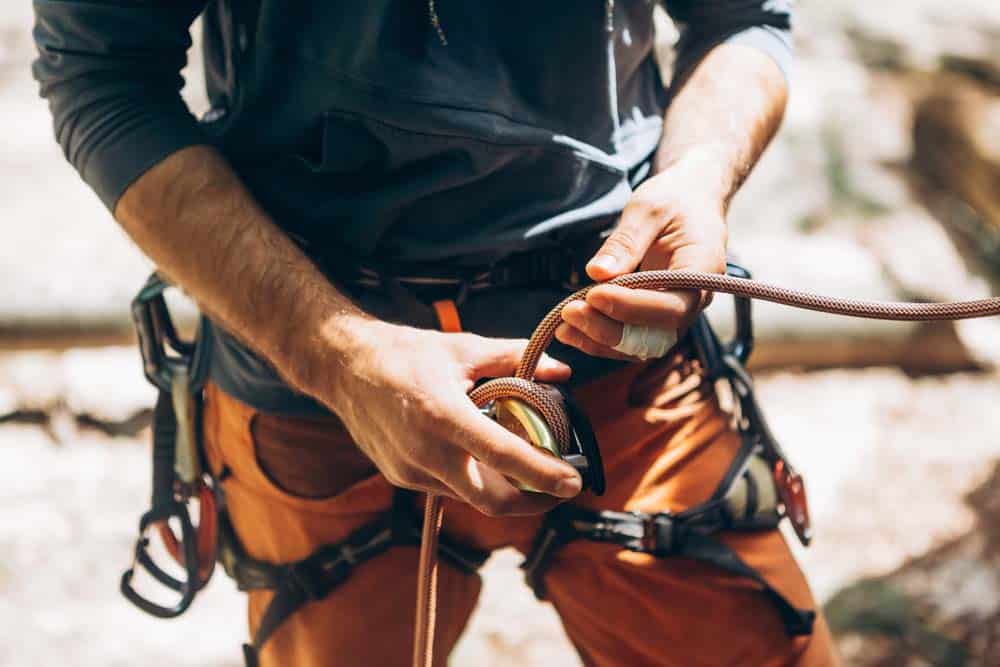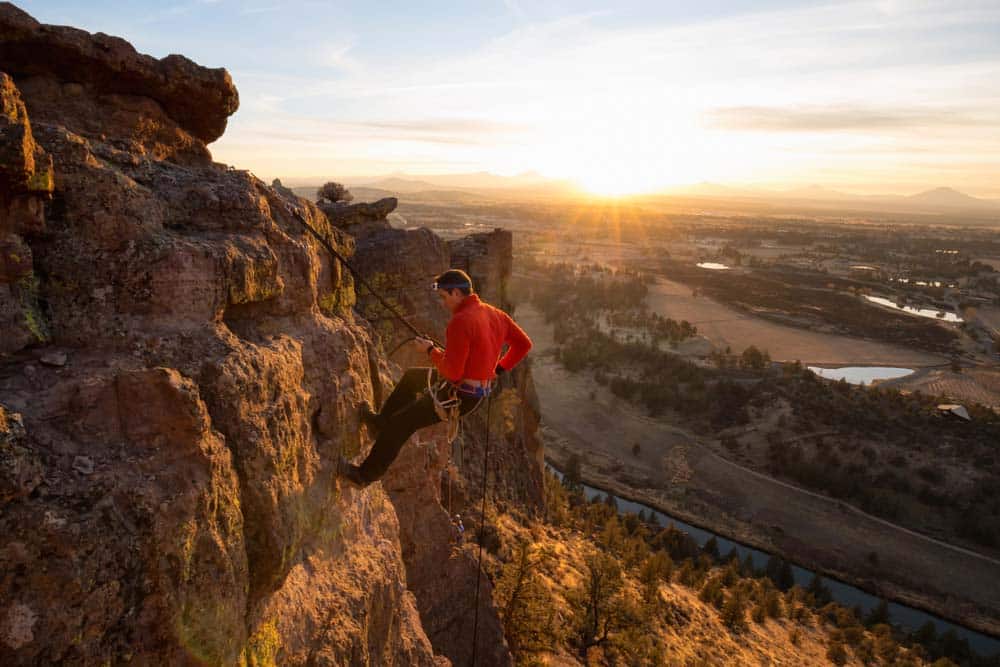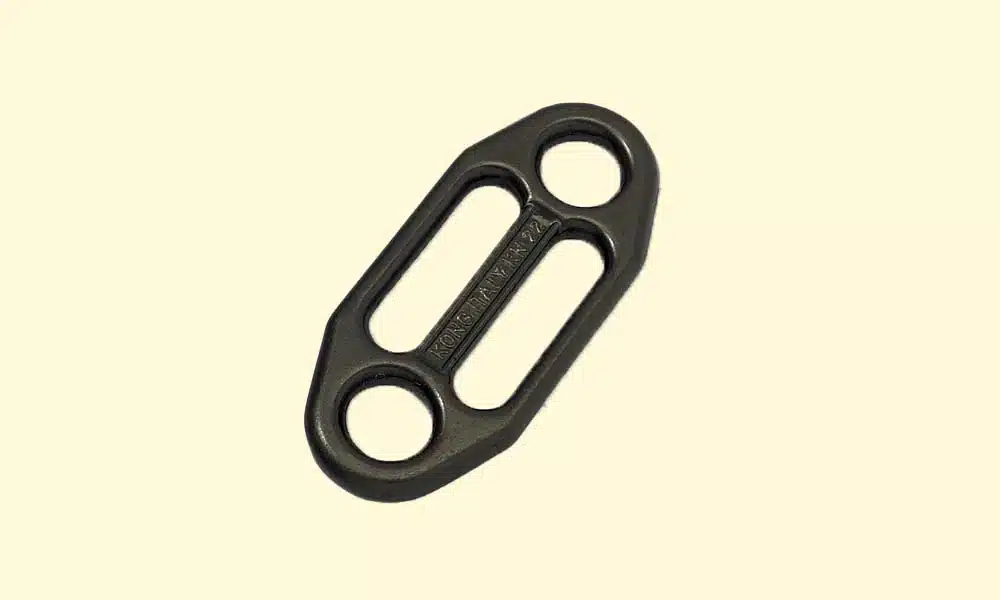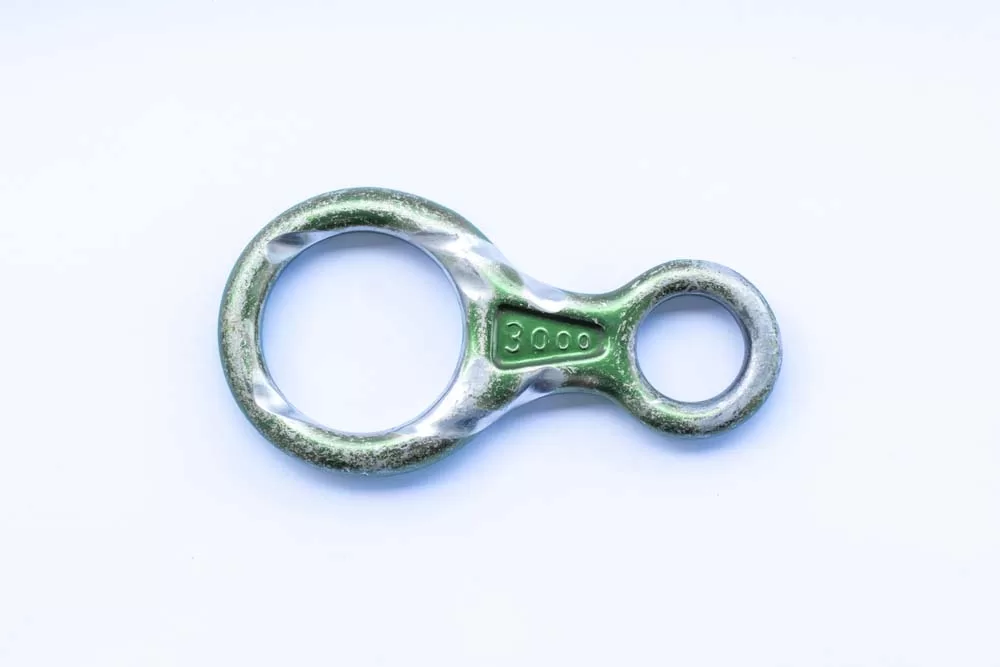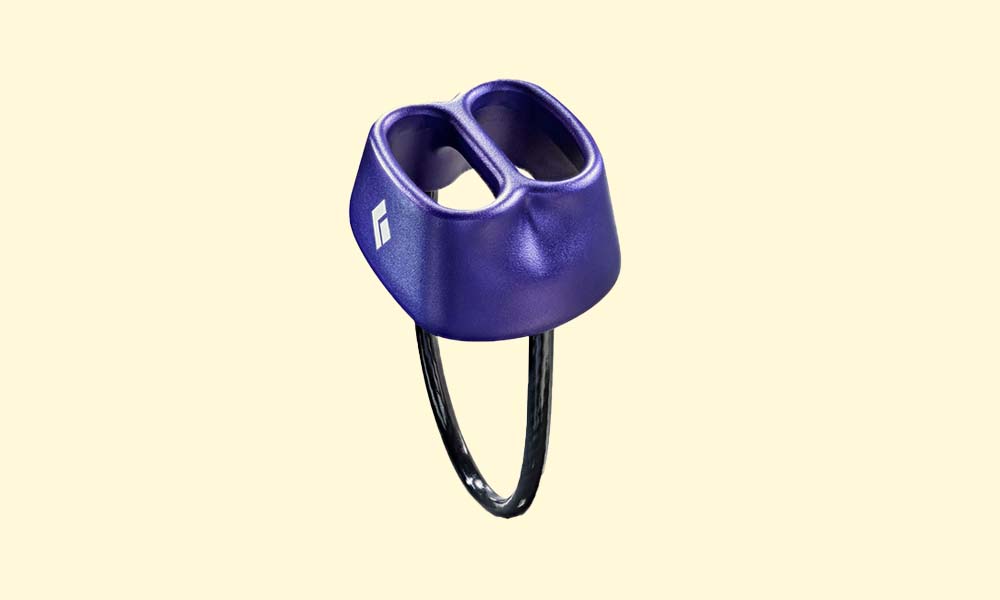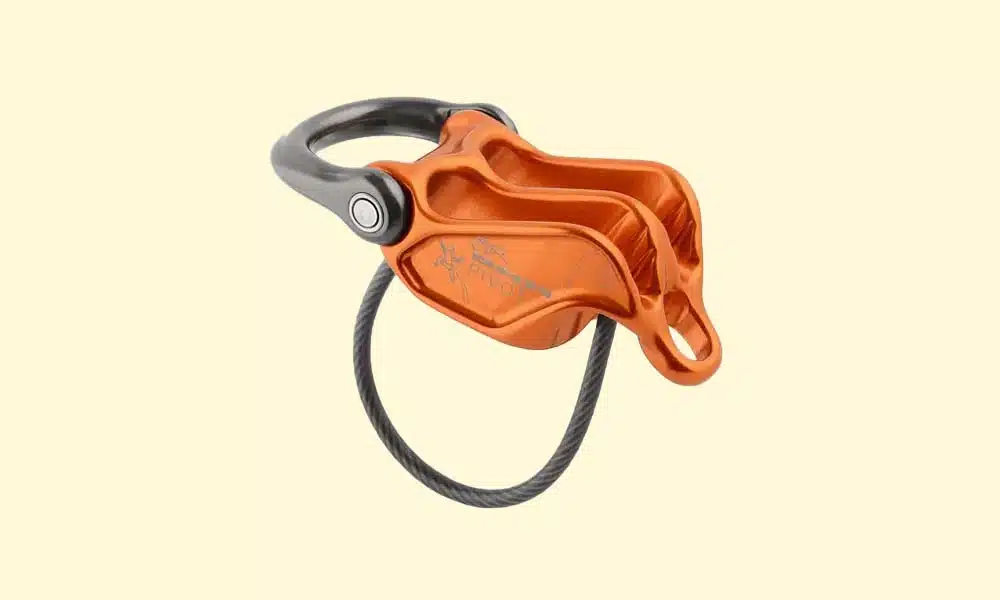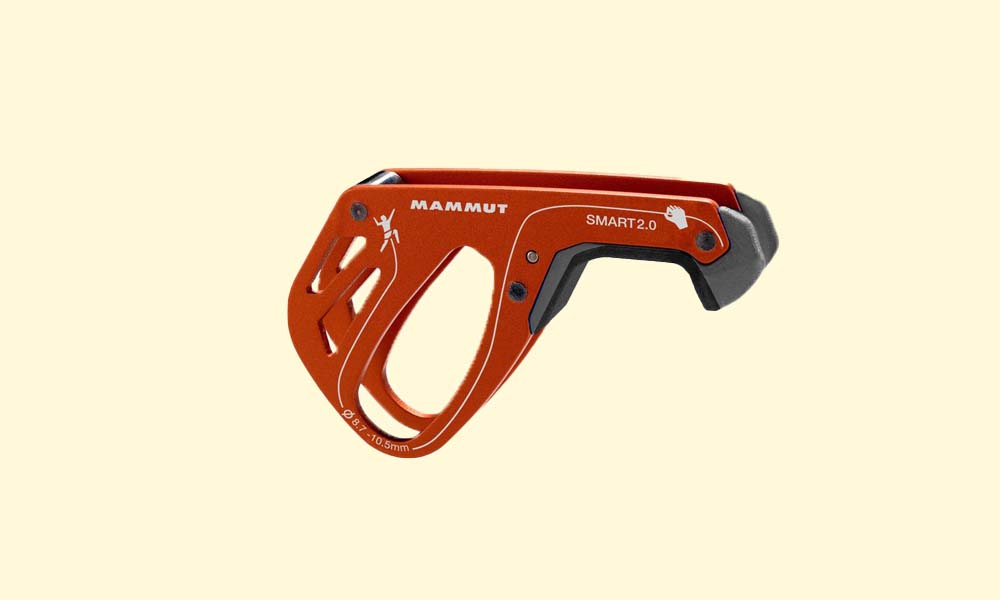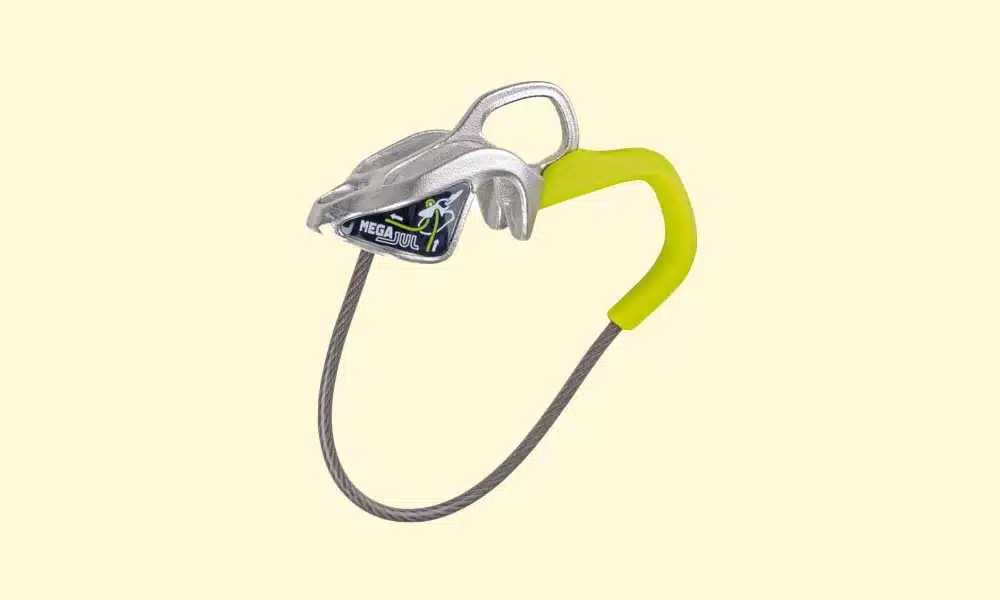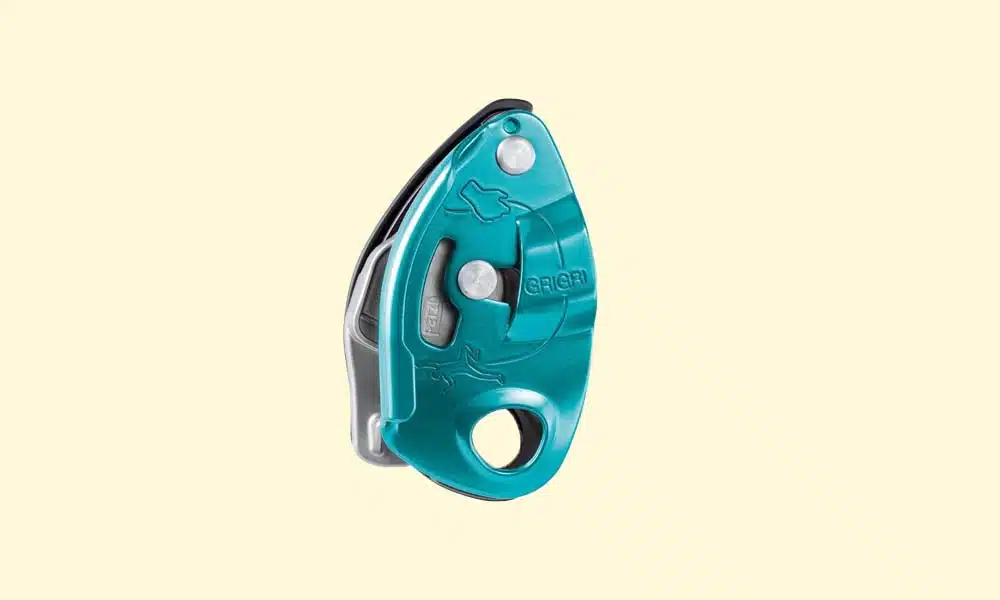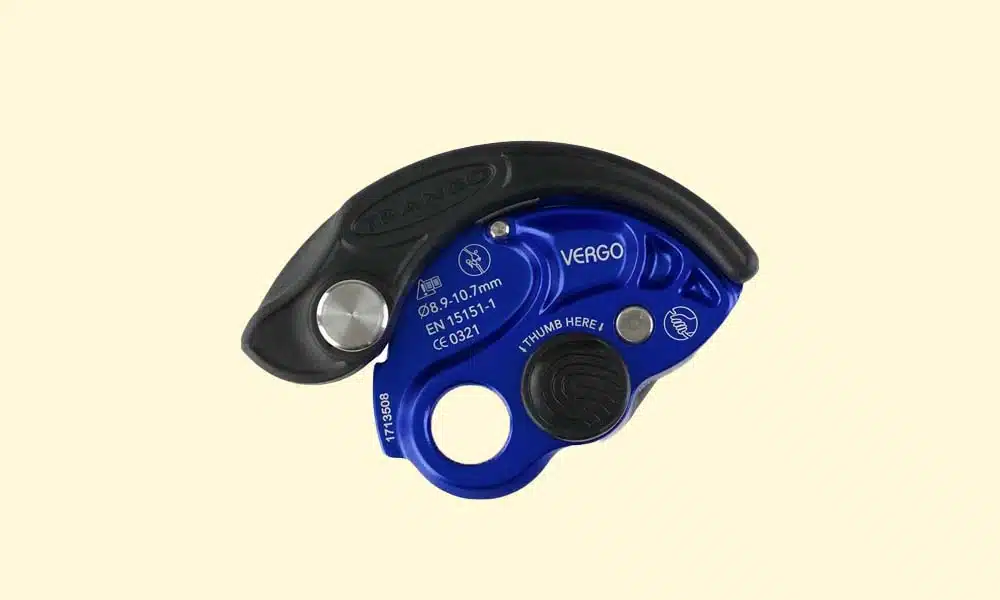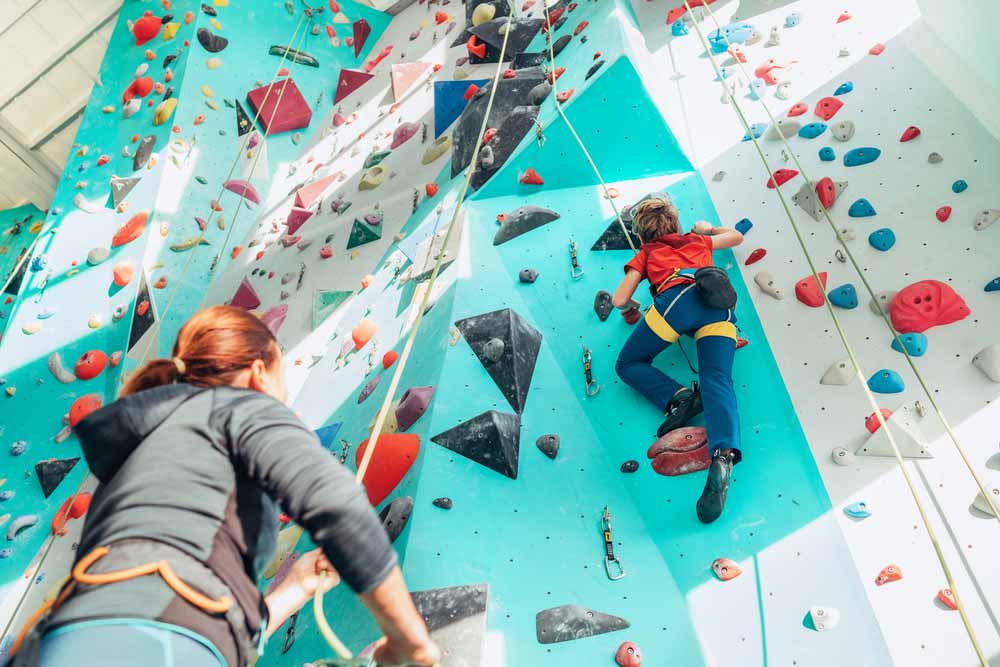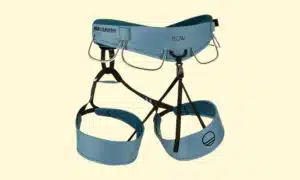A falling climber is an inevitability of rock climbing– messing up beta, holds breaking off outside, endless pump, and practice falls in climbing gyms are all catalysts for taking the whip. All of these scenarios would be way more sketchy if it weren’t for a belayer on the other side of the rope operating a belay device.
Fortunately nowadays, climbers don’t like decking and belay devices have become commonplace. Even better, we have belay devices with assisted braking. But it wasn’t alwasys like that.
In this article, I’ll briefly discuss the evolion of belaying and belay devices overtime, talk about some of the most common belay devices on the market, including thier pros and cons, and then share my unsolicited advice to help you deploy the right belay device at the right time.
The Evolution of Belaying and Belay Devices Overtime
If you are new to climbing, then you might assume that belaying has always been taught in a gym, and belay devices were always assisted braking devices. Sorry to let you down- but that’s not the case.
Fortunately, the story of how we got to this point is super interesting. Let me explain!
It all started with Hip and Terrain Belays
Believe it or not, belaying with a device was not always how climbers operated. Before the invention of the first belay device, climbers deployed hip belays by wrapping the rope around their bodies, usually the waist, to increase friction and create stopping power.
In addition, climbers took advantage of nearby terrain for belaying. By wrapping the rope around unmovable boulders or trees, they could create enough friction to arrest falls. Needless to say, the climbers on the sharp end did everything they could not to fall and test the system.
Today, experienced guides still deploy hip and terrain belays to add security in certain types of low-angle or scrambling terrain. However, a belay device is always used for legitimate technical climbing where the fall risk is likely.
Then came the Munter Hitch as a Belay “Device”
Before early climbers began using purpose-built belay devices, they learned to use the Munter hitch to give belays, catch falls, rappel, and lower climbers. Today, we understand the Munter hitch was popularized and named after Swiss mountain guide Werner Munter.
However, its roots actually date back further than Werner, with Italian climbers, where it was known as the nodo mezzo barcaiolo, which translates roughly to “half clove hitch belay.” Therfre, in some circles, the Munter is also referred to as the “Italian hitch”.
The Transition from Plates-Style to Tube-Style Belay Devices
Eventually, sometime in the 1970s, the first belay plate became popular. At the time, the Salewa Sticht Plate was at the cutting edge of belay device technology. The device was invented by Fritz Sticht and Hermann Huber as a “braking device for a rope, especially for mountaineers.”
Then, just a few decades later, Black Diamond came out with the first tube-style Air Traffic Controller device, or ATC for short. Weighing almost nothing and providing a better belay experience for the belayer and a safer climbing experience for the climbers, the Black Diamond ATC rapidly became the preference amongst climbers.
The Creation of the Assisted Braking Belay Device
Around the similar time, Petzl began the research and design process for what would become the first mechanical assisted braking belay device. Eventually, in 1991, the original Petzl Grigri took the belay device market by storm. Since then, the original Grigri has continued to be improved, with models like the Grigri 2 and Grigri+, and has paved the way for similar assisted braking devices.
When considering assisted braking devices, there are mechanical devices, also known as active assisted braking devices, where a mechanism inside the device blocks the rope. There are also tube-style assisted braking devices, also called passive, where the blocking functionality of the assisted braking device is created between the locking carabiner and the device itself.
Now, in modern climbing, there is a device for everything. Most major climbing gear manufacturers have their renditions of plates, tubular belay devices, and assisted braking devices– there are specialzied belay devices and other devices that can do it all.
What device you end up with is largely a reflection of when you learned to climb and belay, the style of climbing you prefer, where you climb, your brand loyalty, and how hip (or not) you are with the development of new devices.
How Do Belay Devices Get Used?
If you answered that question by thinking, “for belaying,” then you’d only be partially correct. In reality, most belay devices are versatile tools that can be deployed in multi-faceted ways.
Lead belaying and Top Rope Belaying
Yes, a belay device is used for belaying. To be more specific, you can use a belay device to give a lead and top rope belay.
Lead belaying is where you give slack through your device so the leader can advance upwards. On the other hand, top rope belaying is where you take slack through your device to maintain a taught rope as the climber ascends. In the event of a fall, or to take a break, you can use the belay device to grip the rope and arrest a fall or hold the leader in place.
In either scenario, as the belayer, you function as the counterweight to your climber. When it’s time to bring them down, you can lower a climber by modulating the friction you are creating on the climbing rope with your belay device.
Rappelling
Most, if not all, belay devices are not only used for going up (belaying). You can also use a belay device to descend via rappelling.
Rappelling is a technique where you use a rappel device to move over the rope to descend. While rappelling, you modulate the friction on the rope to control the speed of your descent.
The rappel device you deploy will depend on your specific scenario. For example, in a canyoneering setting, figure 8 rappel devices are often utilized. In a rock climbing setting, tubular or assisted braking devices can be deployed to rappel.
Progress-Capturing in Rescue Scenarios
In a rock climbing setting, the two most common applications for a belay device are belaying and rappelling. However, besides that, most belay devices can be used as a progress-capture device in a hauling system you might build in a rescue scenario for an injured climber.
A progress-capturing device is something that holds the rope in place in a hauling setup. More specifically, a progress-capture complements a rope-grabbing device, like a friction hitch.
For example, when properly set up and operated, assisted braking devices like the Petzl Grigri or tube devices like the DMM Pivot (in guide mode) can be paired with a rope-grabbing tool to haul a climber upwards.
The Different Types of Belay Devices
There might be more belay devices on the market than stars in the Milky Way Galaxy. Therefore, I won’t even attempt to create an article that comments on all of them.
Instead, I organize the devices into four categories and then speak about just a few exemplary devices. If you are a super fan of other devices not on my list, so be it. If you are just now learning about belay devices, I hope this helps.
Plate-Style Devices
Kong Gigi
The Kong Gigi is a simple plate style-device popular amongst climbing guides and less so with recreational climbers. It’s a simple, two-slotted plated made from hot-forged aluminium. It’s lightweight, durable, and features no frills. The Gigi truly shines when belaying from the top of a pitch (in guide mode) with two ropes because of its smooth action.
Black Diamond Super 8
Although not techncially a plate-style device, I wanted to include the Super 8 because it was developed and and used alongside plate-style devices for a long time.
Back in the day, figure-8 devices were the chosen tool for giving belays and rapelling. Still to this day figure 8 devices are the preferred tool for sports like canyoneerring where descending is the primary mode of transport instead of ascending.
Tubular Devices
Black Diamond ATC
The Black Diamond ATC is the poster child for all tubular belay devices. So much so, that most climbers unaminousky refer to their tube-style device as an ATC even if its made by a different manufacturer.
The ATC is highly-versatile, simple, and durable device that can quite literally do anything in the rock climbing context.
DMM Pivot
DMM for European climbers is akin to Black Diamond for North American climbers.
Therefore, the Pivot is one of DMM’s most well known and functional tubular belay devices. Like the ATC, the Pivot is a super verstile tool that you can use for belaying, rappelling, and lowering.
One unique feature of the Pivot is the moveable shackle that helps you more easily intitate a lower while belaying in guide mode.
Assisted Braking Tube-Style Devices
Mammut Smart 2.0
Overtime, climbing gear manufacturers wanted to integrate the simplicity of tubular belay devices with the modern preference for an assisted braking mode.
What came from the marriage of these two concepts was tube-style assisted braking devices, like the Mammut Smart 2.0. With the Smart, you get the looks and function of single-slotted tube device, with the modern security of assisted braking mode.
Edelrid Mega Jul
Another example of a tubular belay device with an assisted braking mode is the Edelrid Mega Jul.
The Mega Jul, which is actually the evolution of Edelrid Jul belay device, is super modern example of assisted braking tube devices. It features dual slots for climbing with two ropes, and can be used in guide mode.
Mechanical-Assisted Braking Devices
Petzl Grigri
When climbers dream of assisted breaking devices in their sleep, they dream of the Petzl Grigri, it’s that good (and engrained into the meta of climbing).
The Grigri is a hyper-versatile, smooth operating, and secure belay device. It’s equipped on practically every climber’s harness everywhere in the globe, or some other device directly inspired by the Grigri’s original legendary design.
Trango Vergo
For a while, Petzl had the mechanical assisted braking belay device market cornered. But slowly overtime, other manufacturers joined the assisted braking party, like Trango.
The Vergo is a very interesting take on assisted braking devices. It looks like what you’d expect, and features the classic assisted braking camming mechanism, but functions on horizontal plane instead of vertical. In other words, you oay out slack horizontally when lead belaying instead of vertically.
Samples Scenarios For the Application of Different Belay Devices
To help add context to when you might apply one device compared to other belay devices, I want to mention a few sample scenarios.
Just remember– every climber is different and has different preferences for the devices they put into practice. Therefore, these sample scenarios are just examples of my personal preferences, not practices you must follow.
Belaying Two Followers on Separate Single Ropes with a Gigi
I like using the Gigi when belaying two ropes from above while in guide mode because the device’s super simple plate-style design reduces the amount of friction exerted onto the ropes. This means I can more easily move the ropes through the device and give a better belay. And the belaying process is more ergonomic and comfortable for me.
All the while, the Gigi still provides the super important assisted braking function that comes with all plate or tubular belay devices when rigged in guide mode.
Lead Belaying a Friend on their Sport Climbing Project with a Grigri
For long belays while sport climbing, especially when my partner is projecting something, I prefer to use the Grigri. Thats because the Grigri’s assisted braking mode does all the heavy lifting for me regarding arresting falls and holding my climber stationary while they are resting.
With a tube device, I’d have to be death-gripping the rope the entire time they rest. With a Grigi, I can relax a little more, maintain contorl of the brake strand with my brake hand, and let the device’s camming mechanism do the work.
Climbing an Alpine Route with Double Ropes with an Alpine ATC Guide
When I go into the alpine for multi pitch climbing where I know I will be using double ropes (half or twin ropes), I prefer the Alpine ATC Guide.
In reality, I could get away with using any tube-style device that can be used in guide mode. But I like the Alpine ATC because its smaller and lighter. Plus, when it’s time to rappel, the smaller design of the Aline ATC functions better with skinnier ropes.
Climbing with a Single Person with a Single Rope and a Grigri
When I am out climbing with one rope and one person, my preference for belay device is the Grigri. I like the Grigri in this scenario because I get added security from the assisted braking mode when giving lead belays. Plus, I can belay from the top in guide mode. And then when it’s time to go down, I can super easily rappel with a Grigri.
The Major Takeaway About the “Right Belay Device”
When it comes to belay devices it’s helpful to think of them as tools that help you accomplish a task. For example, you wouldn’t use a screwdriver to hammer a nail, you’d use a hammer. Therefore for climbing, the goal should be to deploy the correct belay device for the given scenario. And for scenarios where hypothetically you could use multiple devices, go with your personal preference.
This inevitably means you will come to possess multiple belay devices. As you do, take your time, pay attention to the details of each device (like preferred rope diameters), use proper belay technique, and always follow the manufacturer’s instructions and safety guidelines for usage.


